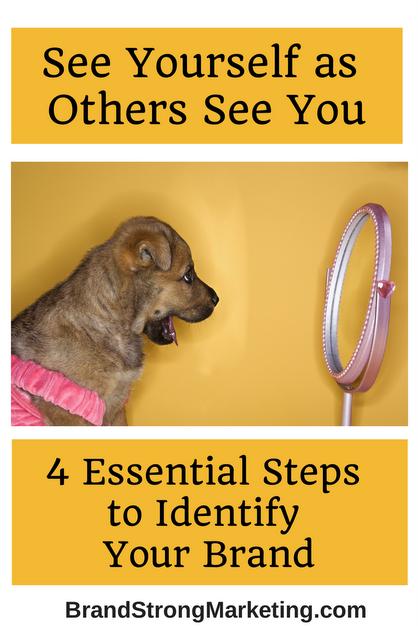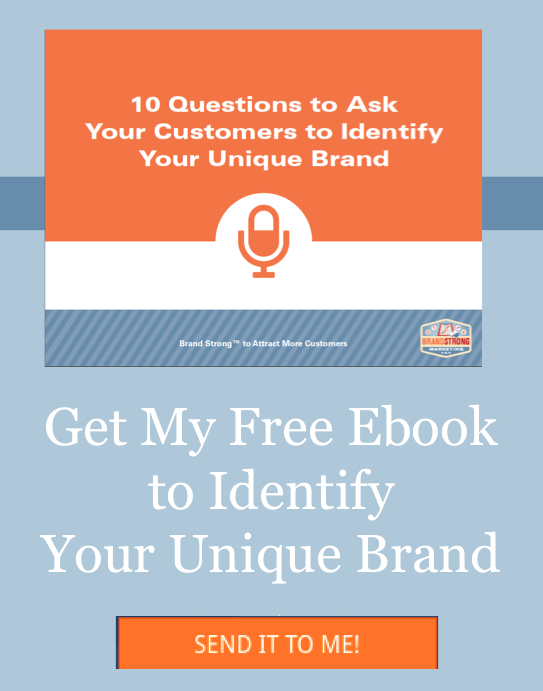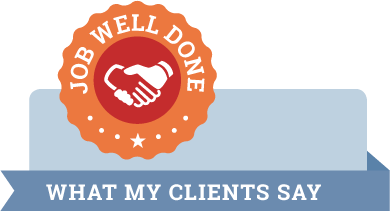4 Essential Steps to Identify Your Small Business Brand

Last week I shared why it’s so important to identify your company’s brand. One of the main reasons was because you have a brand whether you actively promote it or not. Every time to you talk with or deliver your product or service, your customer forms an impression of what your company stands for. If you are hoping to get repeat business or referrals from them, you need to know what they think of you. It might not be what you want.
If you are just launching your company, you’re lucky. You have a clean slate and you can stake your claim in the marketplace with a strong message. However, for businesses that have been around awhile you need to identify what your brand is. You need to look in the mirror and see yourself as others see you.
Here’s how you can start the process of identifying your brand:
Build Your Brand Team. Two heads are better than one when it comes to identifying your brand promise. It’s hard to look at your company and see it objectively. Even though I am a branding consultant, I bring in someone to help me work on my own brand. I’m just too emotionally involved. An outside opinion keeps me from falling in love with ideas or messages that won’t resonate with my customers.
So to get started, put together a Brand Task Force. Pull from your management team (they should have the vision of where you want your company to go) and customer facing employees (they get daily feedback on what your customers need and value). You’ll appreciate having insight from different aspects of your company. If you are a solopreneur, see if you can ask a peer, mentor, or business associate to help you as an objective opinion. If you get stuck or can’t come to a consensus on what your brand is and should be, you can always bring in a brand consultant.
Conduct a Little Research. Your brand resides in the minds of your constituents – customers, potential customers, employees, strategic partners, maybe even investors. To find out how they see your company, you’ll need to ask them. Be creative with your questions. Sometimes the more surprising the question, the better the information collected. You want the emotions and feelings the person has about your company, so keep asking, “Why?” until you get the information you need.
Tip: I encourage you to conduct the interviews in person or over the phone. Sure, you can send an email survey using a service like Survey Monkey. While you might think that it will save you time, for something as important as identifying your brand, DON’T DO IT! It’s just too hard to get people to complete a survey when you are asking open ended questions where they have to think and write a response. Most people don’t like to write or take the time out of their busy day to write. So, your email responses tend to be brief and therefore not helpful when you want thoughtful answers. Finally, phone or in-person interviews allow you to dig deeper if you don’t understand an answer or want to keep exploring a really good insight. It takes a little digging to get at something as intangible as your brand. You just can’t do that with an email survey. Use email surveys if you want some quick feedback on a product idea or a customer satisfaction survey. But for something as important and hard to get at as your brand, talk to people.
So, what kinds of questions do you ask? Next week, I’ll provide you with a list of sample questions to get you started.
Analyze the information. Here’s the fun part. Take a look at what you learned from the interviews. Try to weed out the unique attributes of your company. What did people keep saying over and over? Write the ideas on a board. You should start to see patterns developing or ideas being repeated. The more repetition of an idea, the stronger the brand attribute. Circle these ideas!
Also, look for unique ways that people described your company that you would like to explore. 9 times out of 10 you get your best brand messages or insights right from a customer’s mouth. For example, in an interview I did for a client, the customer described the company as a Brillo Pad. (You know, those steel wool scouring pads people used to scrub food stuck on the bottom of pots and pans.) The customer said, Company X gets in there and keeps working at the hard problems until they are gone. Now, that is a creative insight you can work with!
Finally, look for disconnects. Do your employees think you excel at customer service but your customers never mention it? Hmmm. You might need to address that.
Distill down to the insights. Distill the information collected to about 5 – 10 key insights or characteristics that make your company special. See if you can collect insights on what makes the company unique, what problem you really solve for people, who would be most attracted to your company, and the “personality” of the company: friendly, creative, edgy, thought leader, etc. These 5-10 key insights will provide the foundation for articulating your brand promise, which we will focus on in a future post.
Remember – not all insights need to be customer focused. One of your brand attributes could be a creative place to work. That’s important to know for hiring new employees.
Hopefully, you can now see your company as others do and create a strategy to strengthen that brand or change it, if needed.
Has your company done this process? What was the most insightful comment you got from your customers?






